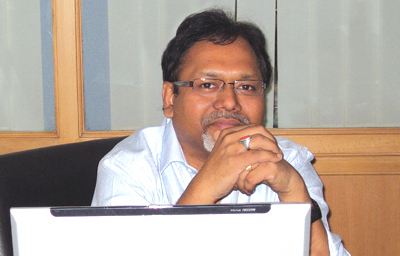INDIAN ARMED FORCES CHIEFS ON
OUR RELENTLESS AND FOCUSED PUBLISHING EFFORTS

SP Guide Publications puts forth a well compiled articulation of issues, pursuits and accomplishments of the Indian Army, over the years

I am confident that SP Guide Publications would continue to inform, inspire and influence.

My compliments to SP Guide Publications for informative and credible reportage on contemporary aerospace issues over the past six decades.
A Word from Editor

After two years of negotiations, French aerospace majors Dassault and Thales and the Indian Air Force have agreed on a price for upgrading 51 Mirage 2000s. It sounds good; but like most good things, this would be costly.
The forthcoming visit by French President Nicolas Sarkozy will be keenly watched. Among other things on the cards is the inking of the Mirage 2000 upgradation deal. After two years of negotiations, French aerospace majors Dassault and Thales and the Indian Air Force have agreed on a price for upgrading 51 Mirage 2000s. It sounds good; but like most good things, this would be costly.
In all likelihood, unless the French accede to Indian wishes, the deal would be for a per unit upgradation cost in the $41-43 million range. The overall cost will come to close to $2.1-2.2 billion. It is this figure that has raised many an eyebrow. The point being debated by many defence experts is that had India gone in for a deal for 50 Mirage 2000-5s way back in 2001 itself, the cost would have been the same. The flipside of any agreement will be that India would only get an upgradation done; there would be no new aircraft.
When Mirage 2000s were first drafted into the Indian Air Force in 1985, they were looked at with reverence. This faith, as Kargil 1999 proved, was not misplaced. But as time went by, the IAF felt the need for an improved version of the Mirage 2000 i.e. the Mirage 2000-5. That was in 2000. The government decided to go in for a request for information (RFI) the following year. Since then, the acquisition programme has reverted back to the upgradation of the old Mirage 2000s.
The choice, most say, has been difficult. On one hand was the question of a huge amount being spent. On the other was that of the existing aircraft. As Air Chief Marshal P.V. Naik, Chief of Air Staff, said recently, “The residual life of the 50-odd Mirages that are left is another 20 years. If I throw them away, I would have wasted 20 years of that residual life. But upgrading the Mirages with the infrastructure already available, seems a better option considering the lifetime cost.”
The Air Chief has a point – India cannot be too profligate. Yet the issue that we could have acquired the same number of new aircraft for the money that we are spending in upgrading old ones, is not going to go away. This is going to remain in the news for a while, right during this run-up to the signing of the deal to probably a few weeks afterwards.
This deal raises some pertinent issues – that of the existing systems that bring about defence deals. This is what this issue of SP’s Aviation looks at in ‘The cost factor’ (Page 12).
The IAF faces another difficult choice when it seeks new aircraft for pilot training (See ‘A difficult choice, Page 21). But here, it would be a question of it being spoilt for choice. There are many aircraft in the fray, and what the IAF would need to do is choose one to its training philosophy so that it meets the requirements in the next three decades.
Talking of upgradations and training would bring us to modernisation as a whole. We present an in-depth analysis (See ‘Flying Fast Forward’, Page 16) of how the Indian Air Force has embarked on acquiring new doctrinal perceptions by going through fundamental and far-reaching changes and propelling itself into being a true strategic force.
And you cannot possibly miss out on ‘Flights of Fantasy’ (Page 26) which takes readers right inside the world of aircraft interiors and tells us why this industry is booming. It’s all about comfort. It’s all about style.





